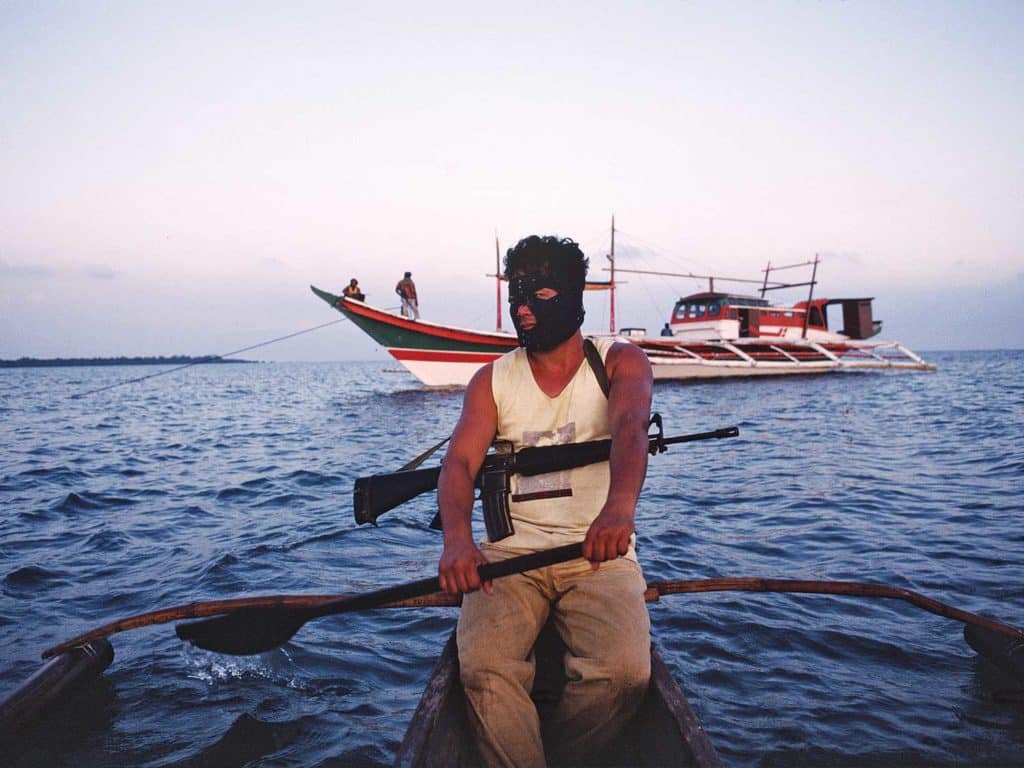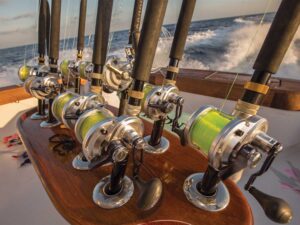
Although it’s not always a main topic of the sport-fishing conversation, most boats heading offshore or to remote fishing locations have no shortage of firearms on board. They do have more rods and reels than firearms, but plenty nonetheless.
So why travel with all these guns? If the reason is security or anti-piracy, do we have the correct firearms and ammunition to protect our family, friends, and property? Even more importantly, are we properly trained to handle those firearms safely and effectively in the event we must engage and/or defend ourselves against a credible threat?
At Home and Abroad
I have spent 27 years of my career in the US Army as a Green Beret and 17 years as a firefighter and paramedic, but over the past eight years, I’ve been building custom offshore medical kits and training those in the industry in emergency medical response and firearm use. And in those years, there have been some interesting stories that are worthy of noting. One involves clients who shared with me an instance where their 61-foot sport-fisher was robbed at gunpoint in a marina in South America; another was of a sportboat running from the west coast of Florida to Texas that received gunfire in the middle of the night from a boat that was following them. There was an exchange of gunfire, but fortunately, the crew was able to outrun the threat, and luckily, no one was injured, although the boat did arrive at its final destination with numerous bullet holes. There have also been a handful of piracy and hijacking stories from in and around the Bahamas and Caribbean over the years, which hits just a little too close to home—Rapscallion and Joe Cool immediately come to mind.
According to governmental reports and statistics, piracy does still exist. Even though globally in 2021 piracy was at a historic low, the threat still remains. The simple definition of piracy is “the practice of attacking or robbing ships at sea.” Typically, these attacks, or piracy attempts, are on large cargo ships and freighters traveling the high seas; in 2021, 90 incidents were reported. This all-time low might be attributed to the decrease in the number of acts of piracy, or might also be due to certain incidents not meeting the criteria of maritime piracy set forth by the United Nations Convention of the Law of the Sea, an agreement that establishes the legal framework for maritime activities.
More than half of reported incidents occurred in the Singapore Strait. Several incidents have been reported in Asia, the Gulf of Guinea, Somalia and a handful in South America. The incidents in South America mainly targeted yachts that were either underway or anchored within a few miles of shore. And even though some in the boating community say it’s not a concern, most believe that the likelihood of an attack is indeed possible.
Be Prepared
The majority of attacks—or attempted attacks—are typically carried out on targets of opportunity. Vessels are most vulnerable when they appear to be unprotected or situationally unaware—during or immediately following a crisis or natural disaster, when typical emergency response is taxed and people are desperate, for example. Being situationally aware gives you the advantage of recognizing when something appears out of place or that there is a potential threat, allowing you to respond quickly and decisively to avoid the threat or engagement completely. If a situation becomes unavoidable and engagement or contact with the threat is inevitable, then the boat and the crew need every advantage possible.
Speed, radio and satellite communication, radar, binoculars, or even scopes are all tools of defense, if used properly. The ability to observe what exactly the threat is and how many possible threats there are from a distance is of great value.
The conditions that pose the most challenging are times during hours of limited visibility, either in darkness or weather-related clarity. The ability to defend from longer distances is helpful, but if the threat is up close and personal, then training, techniques, tactics, and weapon systems might be required.
In any threatening situation, there is always the potential of severe injury. Having a solid emergency action plan is essential to increasing survivability and improving the outcome of a crisis at sea. In any case, the goal is to avoid these situations at all costs and limit your travel to destinations where the likelihood of a pirate run-in is low.
Proper preparation always trumps poor planning, so get educated, train your crew, and make threat-recognition and response one of your highest priorities.
For more information on how to better prepare yourself on the high seas, please visit d-dey.com.







